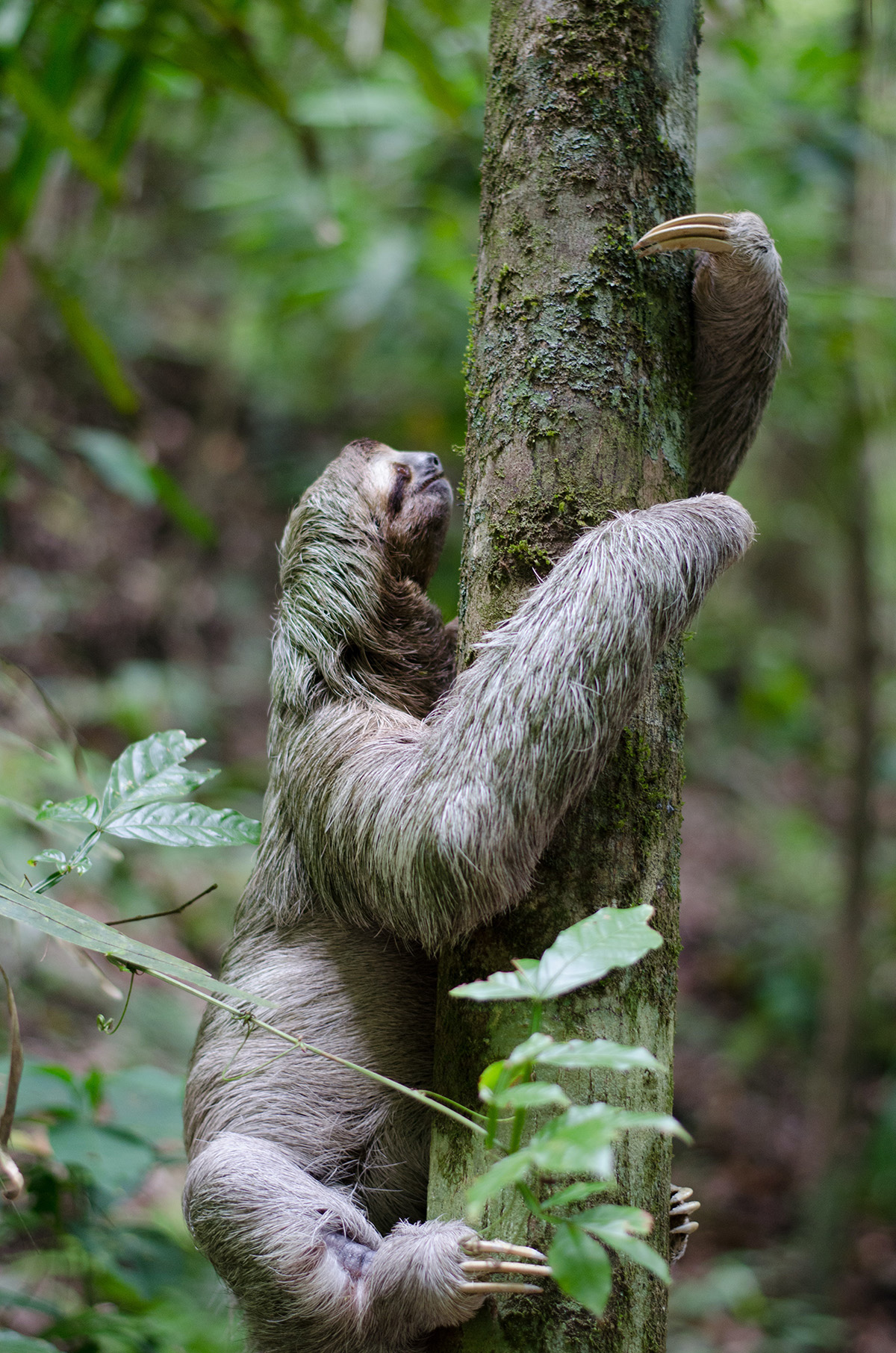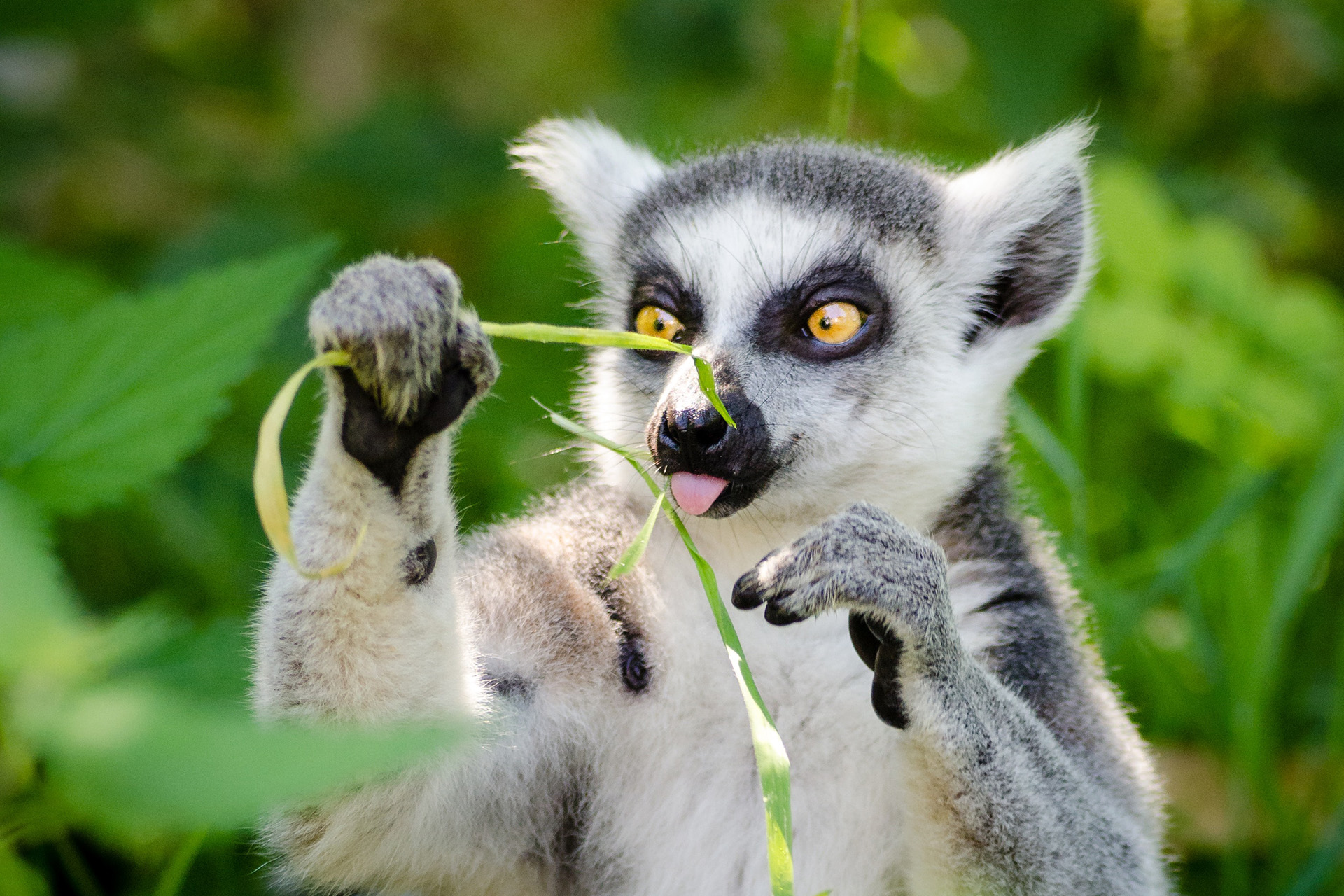Fancy having two tongues. One to eat and another to groom your friends and pick out tasty insects from their fur. That’s lemurs for you. And what about spending most of your life hanging upside down in the trees, even giving birth up there? That’s the sloth. Both are remarkable mammals, sloths being celebrated on October 20th and lemurs on October 30th. Both are threatened with extinction, in large part because of biodiversity loss from forest degradation and deforestation.
According to IUCN’s Red List of Threatened Species, almost a third of lemur species are on the brink of extinction, with 33 lemur species considered critically endangered. This is due to illegal hunting and collection for the pet trade, but also because their forest habitats continue to be destroyed by slash and burn agriculture, as well as by logging for charcoal and fuel wood.
Of the six species of sloth that exist today, two are threatened with extinction and the pygmy three-toed sloth is now considered critically endangered. Ongoing destruction and fragmentation of habitat, exploitation for food, the presence of feral cats and lack of sufficient legal protection have caused a sharp decrease in its population. According to The Sloth Conservation Foundation, there has never been a more important time for conservation action.
It’s not just sloths and lemurs that are at risk from deforestation and forest degradation. According to a recent UN report, over 1 million species are now at risk of extinction.

“Forest degradation and changes in land use bring with them fragmentation of habitats and loss of biodiversity, increasing the risk that the extinction rate of species such as the sloth and lemur will rise” says Juan Ferrando, Regional Technical Advisor for Latin America and the Caribbean for the UN-REDD Programme. “UN-REDD is fighting against deforestation, not only to avoid CO2 emissions, but to protect the habitat of hundreds of species that need healthy forests in order to develop and evolve.”
Fun Facts about Sloths
The sloth is the slowest animal in the world. But this doesn’t mean they are lazy creatures. The truth is that sloths are incredibly slow movers for a very simple reason: survival. The fact that sloths have been on this planet for almost 64 million years shows that they have a winning strategy. Moving slowly requires less energy. They have the slowest metabolism of any non-hibernating mammal. They eat at night whatever is within arm’s reach, such as leaves, shoots, and fruit from the trees in the tropical rainforests of South America and Central America. They get most of their water from plants. There are two distinct features that help the sloth survive: fur that blends in with the trees to provide camouflage and their slow speed which makes them hard to get noticed by predators.
Fun facts about Lemurs
Like sloths, lemurs are arboreal, which means they spend most of their time in trees. There are a hundred different kinds of lemurs, all living in forests on one particular island off the coast of Africa - Madagascar. Lemurs forage for fruit and leaves at night, use their tails as a form of communication, and they come in a wide variety of sizes with the smallest sub-species, the Dwarf Mouse Lemur, weighing just 30 grams. The Black-Eyed Blue Lemurs are the only primate (except humans) with blue eyes.
Scientists estimate that in the past few thousand years, at least 17 lemur species have been driven to extinction, jeopardizing the health and diversity of Madagascar's forests. Lemurs play a vital role in Madagascar as seed dispersers for many plants. With fruit making up a large part of their diet, they will often ingest whole seeds and then excrete them out far from the parent tree, thus helping plants spread and providing an essential service for maintaining healthy and diverse forests on the island.
Want to learn more about the importance of forests and the amazing animals that live there?
Join us on this immersive journey of the forests of Argentina where the jaguar lives, the forests of Indonesia where the Orang Utang lives and the forests in Thailand/Myanmar, home to the smelliest flower, a Siamese crocodile and the world’s smallest mammal: a hog nosed bat.

